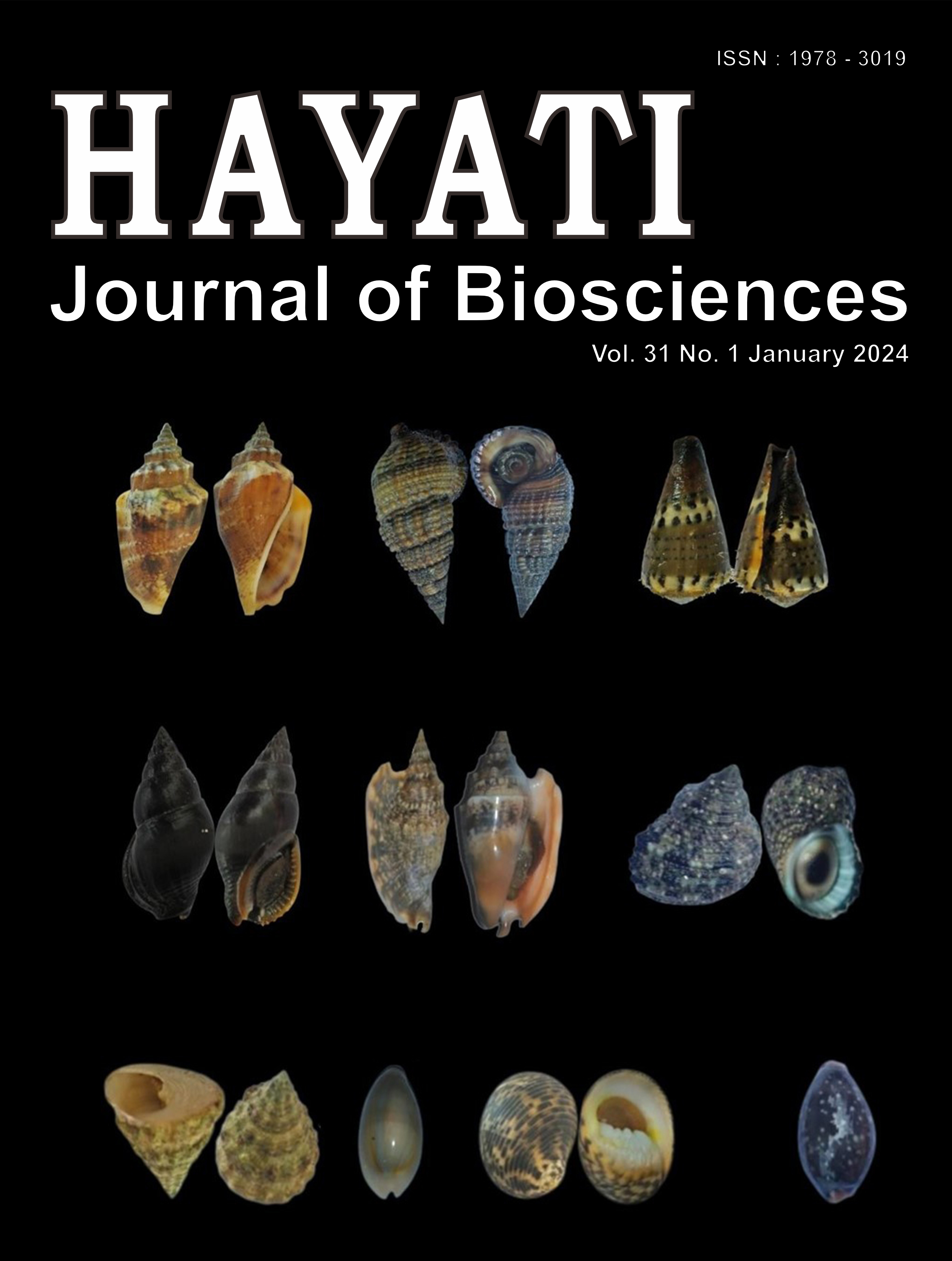The Genetic Variability of Indonesian Local Foxtail Millet Accession Based on Agro-morphological Traits and Early Salinity Tolerance Evaluation Utilizing SiDREB2-based SNAP Marker
Abstract
Foxtail millet (Setaria italica L. Beauv.) is a grain-producing crop with high nutritional benefits and adaptability to broad environmental conditions. Indonesian local foxtail millet accessions are valuable genetic resources for crop improvement of the species. This study aims to assess the biodiversity of Indonesian local foxtail millet accessions and estimate their salinity tolerance level utilizing the SiDREB2-based SNAP marker and early evaluation at the seedling stage. Our results showed that eight Indonesian local foxtail millet accessions, namely Toraja, Mauliru-2, Hambapraing, NTB-1, ICERI-5, ICERI-6, Botok-4, and Botok-10, had high variability based on agro-morphological traits. The Hambapraing and Mauliru-2 were the potential accessions with high yield estimates (2.33 ton.ha-1 and 1.93 ton.ha-1) and early harvest time (<110 DAT). ICERI-6 was indicated as a salinity-tolerant genotype based on the SiDREB2-based marker and early salinity evaluation at the seedling stage, while Toraja, Mauliru-2, NTB-1, and Botok-4 were categorized as sensitive genotypes. Germplasm variability and the estimated salinity tolerance level of Indonesian local foxtail millet accessions presented in this study serve as essential information in the foxtail millet breeding for high productivity, early harvest time, and salinity tolerant variety.
Downloads
Copyright (c) 2023 Sri Ratnawati, Rika Miftakhul Jannah, Yuli Irvana Dewi, Ramadaniarto Rizqullah, Willy Bayuardi Suwarno, Sintho Wahyuning Ardie

This work is licensed under a Creative Commons Attribution-NonCommercial 4.0 International License.
HAYATI J Biosci is an open access journal and the article's license is CC-BY-NC. This license lets others distribute, remix, tweak, and build upon author's work, as long as they credit the original creation. Authors retain copyright and grant the journal/publisher non exclusive publishing rights with the work simultaneously licensed under a https://creativecommons.org/

























.png) IPB University
IPB University Department of Biology
Department of Biology The Indonesian Biological Society
The Indonesian Biological Society 

